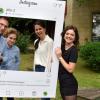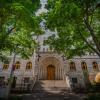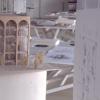Reality in the vapour of light
2025
May
22
This summer, Pécs once again shines in the spotlight. From July 3 to 6, the city transforms into a glowing spectacle with the return of the 9th Zsolnay Light Festival. Visitors can expect a dazzling array of innovative installations along the Path of Light, stretching through the historic city center and the Zsolnay Cultural Quarter. Once again, works by students from the University of Pécs’ Faculty of Music and Visual Arts will also be on display.
In Pécs, summer means light. Rather than winding down, the city bursts into radiance in the first week of July. Now in its ninth edition, the Zsolnay Light Festival has firmly established itself not only as a major tourist attraction, but as a cornerstone of the city’s cultural identity. With an international competition, high-tech installations, street circus acts, and enchanted lightscapes, this four-day event transforms Pécs into a fully immersive experience.
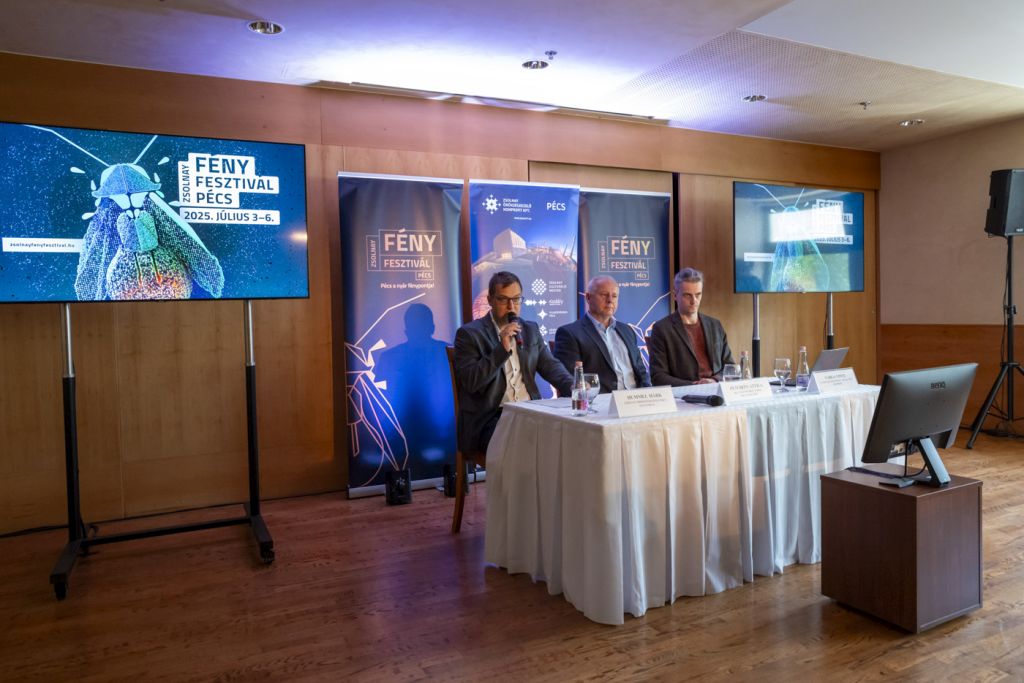
“The Zsolnay Light Festival didn’t become one of Pécs’ most iconic events overnight. Over the past nine years, it has constantly evolved, expanded, and innovated. Today, I can confidently say:
it is the city’s most popular tourist attraction,”
emphasized Mayor Attila Péterffy at the press conference held on May 20.
The festival’s flagship event, the Zsolnay Light Art Mapping Competition, once again turns the facade of the Pécs Cathedral into a breathtaking visual masterpiece. But this isn’t just about aesthetics. This year’s theme, “no//body,” explores concepts of the body, presence, and identity, making the experience as thought-provoking as it is visually striking.
“At this time of year, the cathedral becomes a living work of art… The basilica reveals countless forms of itself.
This tradition began in 2010, and it continues to captivate,” recalled the mayor.
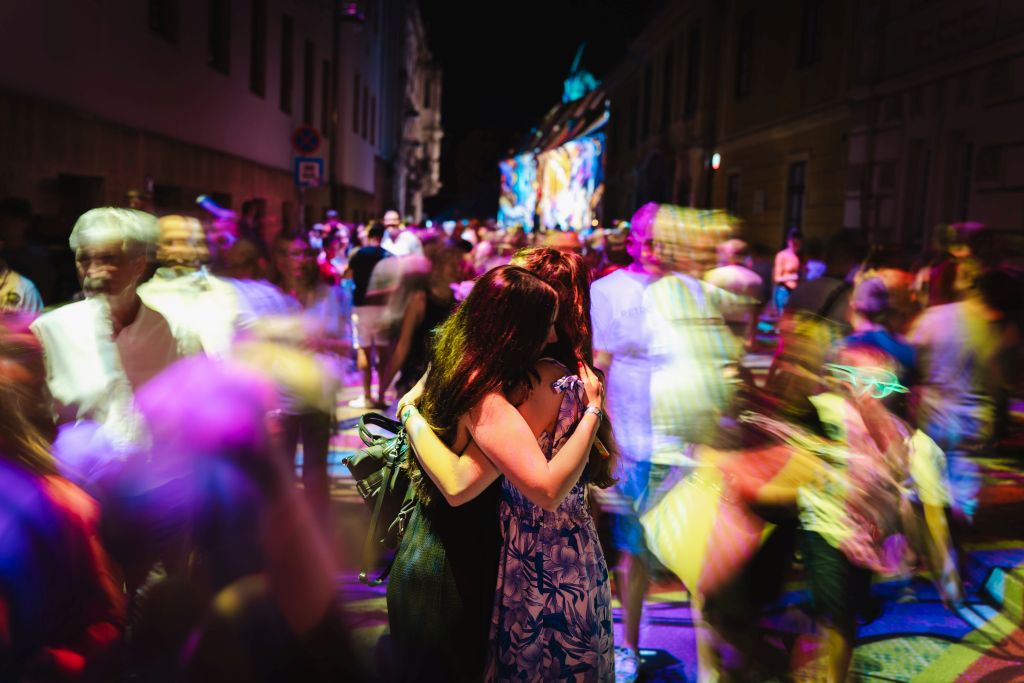
Strolling through downtown Pécs, visitors will encounter works by Italian, Swiss, Spanish, and Hungarian artists, their creations lighting up the night. A love story unfolds on the facade of the city’s oldest residential building through the animation of Italian video mapping artist Francesca Macciò. On Theatre Square, Swiss-based Encor Studio transforms a shipping container into a spectacular lightbox. At Széchenyi Square, the Fényszórók collective will deliver a panoramic light show, while the Anuri design studio from Budapest presents this year’s "Light Carpet." In the Cella Septichora, Spanish artist Javier Riera invites introspection with hypnotic geometric projections.
Meanwhile, the Nádor Gallery hosts a sci-fi-inspired installation exploring how machines learn human facial expressions, this isn’t child’s play; this is the future of communication. Parking for visitors will be available at the ÁRKÁD Pécs Shopping Center, and a colossal LED screen will showcase Stardust, an immersive installation by Filip Roca and Žarko Komar, viewable both day and night.
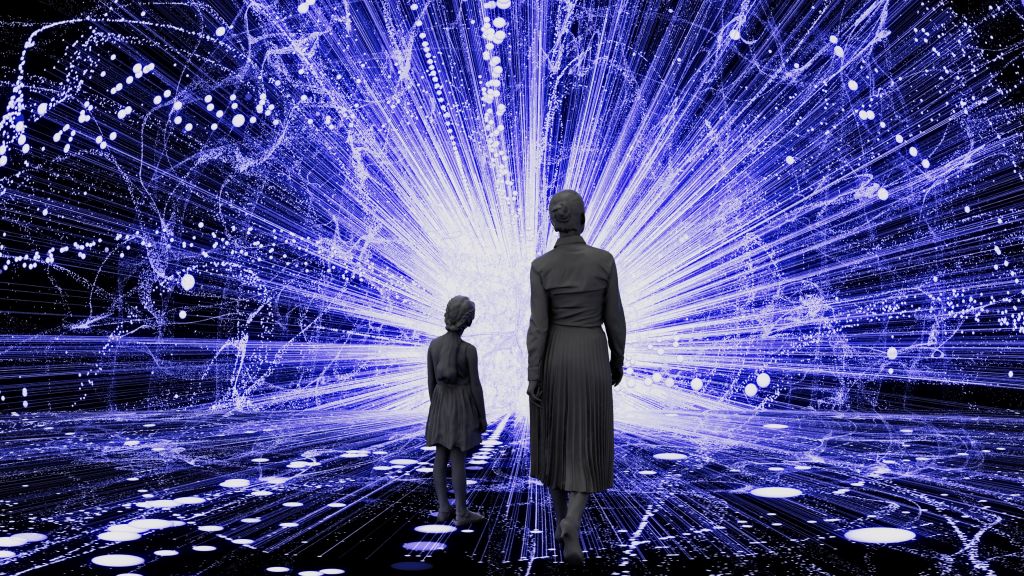
But perhaps the biggest surprise lies beyond the city center. For the first time, the Zsolnay Quarter is not just a side venue, it’s stepping into the spotlight as a full-fledged festival hub. And what a debut! Expect installations by art students, audiovisual shows at E78, dome projections, and sculptural light art. This isn’t just a city stroll, it’s a visual odyssey into the night. Visitors can enter a “garden of light,” guided by secret paths, where each corner unveils a new world. This dual-venue structure balances crowd flow and offers a completely fresh spatial experience.
The Zsolnay Quarter will also host the Light Art Residency, showcasing installations by students from the University of Pécs and the Moholy-Nagy University of Art and Design (MOME).
“I would like to thank the Faculty of Arts at the University of Pécs, both students and faculty, for their collaboration,”
said Márk Hummel, managing director of the Zsolnay Heritage Management Nonprofit Ltd., the festival’s organizing body.
According to Mayor Péterffy, the Light Festival is
“no longer just a visual attraction, but a symbol, a new language of Pécs, spoken in light.”
And this year, that language gets a new dialect, shaped by the hands of young artists. The Faculty of Arts students will deliver one of the festival’s most exciting features in the Zsolnay Quarter: their own original light installations. Plus, a smaller-scale version of the hugely popular “Light Carpet” will be recreated here.
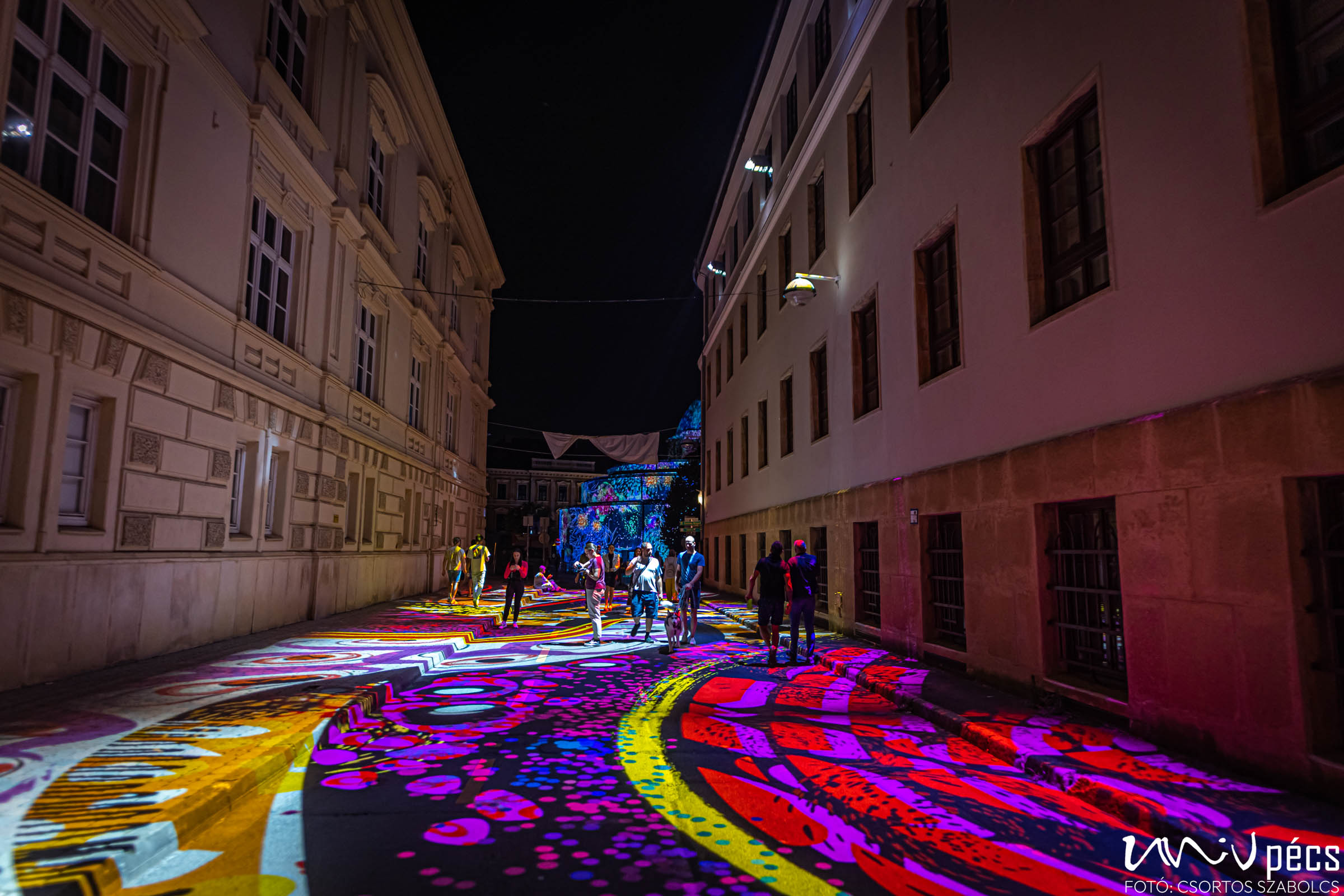
The Kodály Centre will host two deeply moving installations. In Vince Varga’s immersive piece, The Torches Are Already Burning, a mythic tale of boys transformed into deer unfolds in a magical, immersive space of light prisms and sheer fabric forests, evoking the emotional and symbolic universe inspired by Béla Bartók.
“We don’t want to ‘explain’ the tale, we want to give the audience a space to find their own answers through light, sound, space, and text,”
said the director.
Next to it, Japanese artist Yasuhiro Chida’s Analemma offers a meditative, floating spatial experience, making the Kodály Centre one of the festival’s most intimate stops.
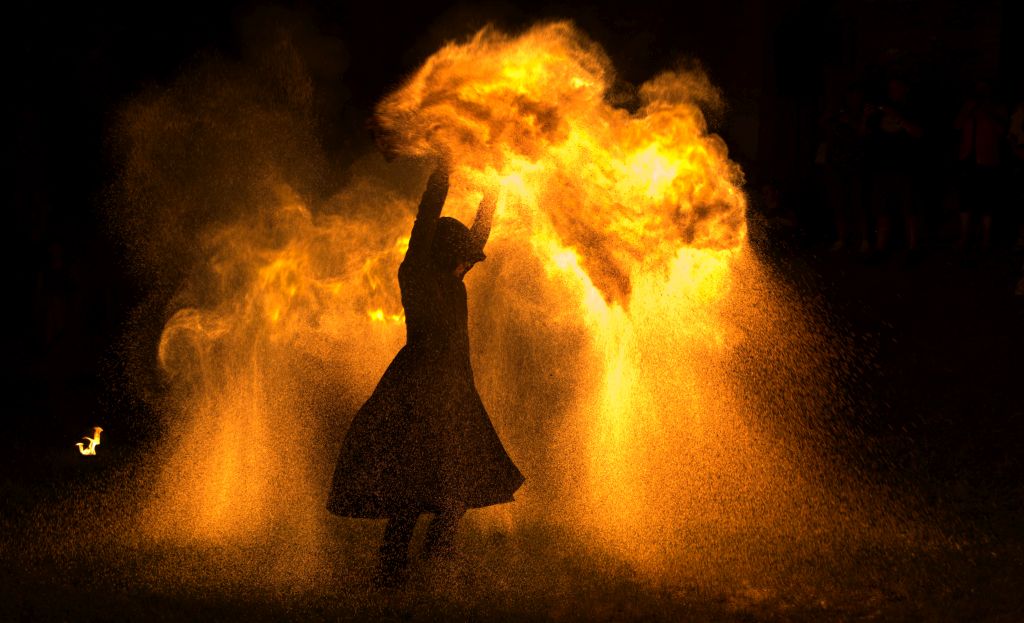
By day, the city pulses with energy too. The “Mama Octopus” performance brings humor to the challenges of motherhood, while the percussion group Brincadeira lights up the square in front of the Mosque with their high-energy rhythms on two evenings. At Barbakán, fire jugglers and acrobats will provide a spectacular closing act.
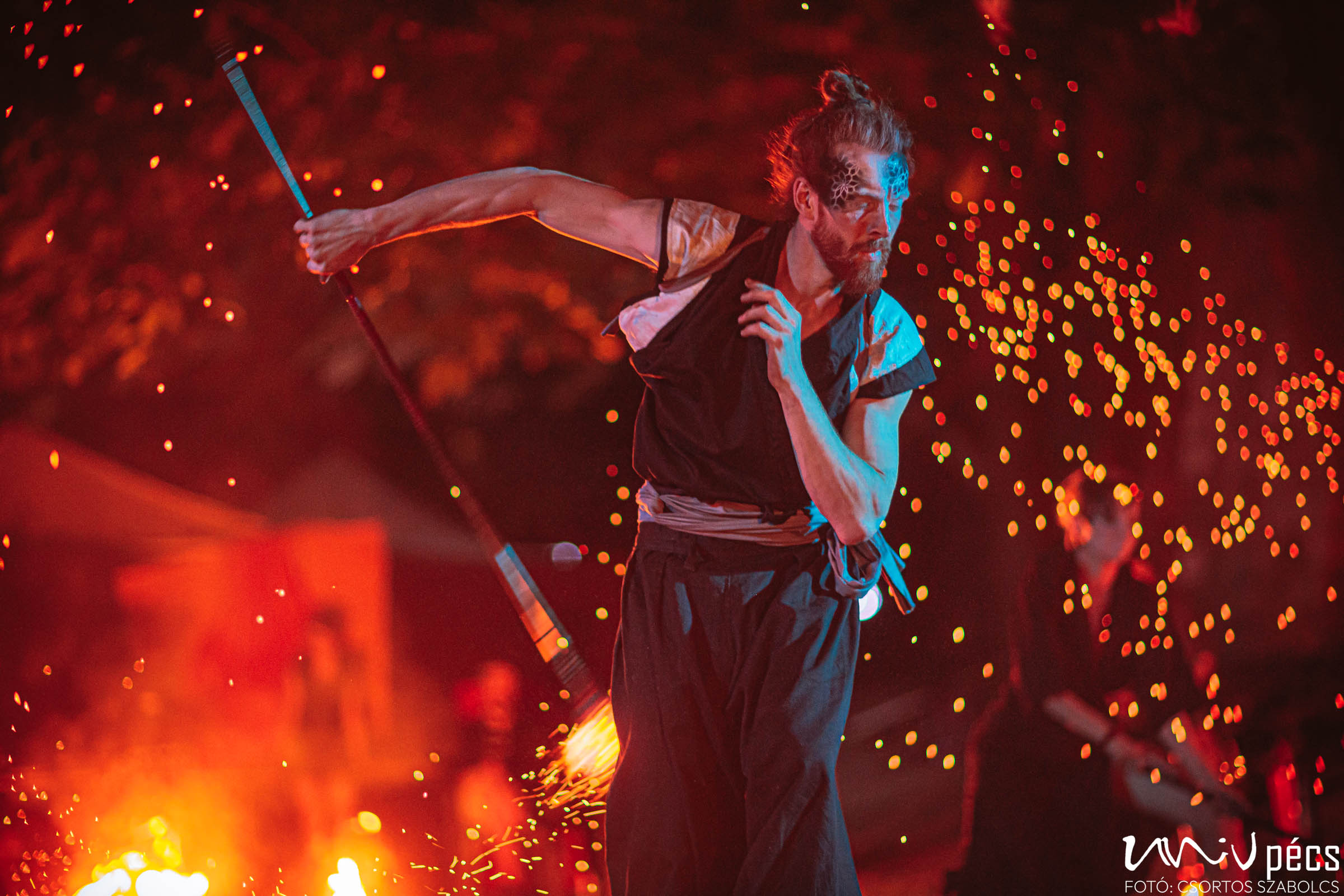
The Zsolnay Light Festival has outgrown itself. This year, organizers expect over 100,000 visitors. All open-air installations and attractions along the Path of Light are free of charge, while access to indoor exhibits—the Path of Light Extra, requires a festival wristband. Discounted early bird tickets are already available.
There’s no doubt: this festival is the brightest highlight of the Pécs summer. As Mayor Péterffy put it:
“Pécsness, always. Especially during the Zsolnay Light Festival.
Perhaps this is the week we finally understand what it truly means to be from Pécs.”
- Log in to post comments
University of Pécs | Chancellery | IT Directorate | Portal group - 2020.

